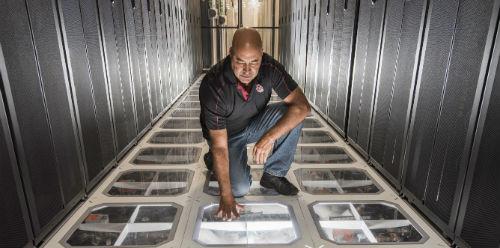United States. In different parts of the country, people talk about graywater recycling and rainwater capture to minimize the millions of liters of water needed to cool large data centers. However, the simple answer in many climates, said researcher David J. Martinez of Sandia National Laboratories (Albuquerque), is the use of liquid coolant.
In different parts of the country, people talk about graywater recycling and rainwater capture to minimize the millions of liters of water needed to cool large data centers. However, the simple answer in many climates, said researcher David J. Martinez of Sandia National Laboratories (Albuquerque), is the use of liquid coolant.
Based on this principle, Martinez – leader of Sandia's infrastructure computing services engineering project – is helping to design and monitor a cooling system to generate savings of 4 million to 5 million gallons a year in New Mexico if installed next year. At the Sandia computer center, and hundreds of millions of gallons nationwide, if the method is widely adopted. It's now being tested at the National Renewable Energy Laboratory in Colorado, which it hopes will save a million gallons a year.
The system, built by Johnson Controls and called the Hybrid Thermosiphon Refrigeration System, cools like a refrigerator without the need for energy expenditure and a compressor.
Today, many data centers use water to remove waste heat from servers. The heated water is channeled to cooling towers, where a separate stream of water turns into steam and evaporates into the atmosphere. The process removes heat from the water by pipe, which cools the installation again. But the replenishment of evaporated water is needed to continue the process. Therefore, more water will be needed around the world to evaporate heat from the growing number of data centers, which in turn are increasing in size as more users put the information in the cloud.
The prototype method uses a liquid coolant instead of water to take away the heat. The system works like this: Water heated by the computer center is pumped inside a closed system in the vicinity of another system containing coolant. The coolant absorbs heat from the water so that the water, now cooled, can circulate to cool again. Meanwhile, the heated refrigerant vaporizes and rises in its closed system for heat exchange with the atmosphere. As heat is removed from the coolant, it condenses and sinks to absorb more heat, and the cycle repeats.
In New Mexico, they would be produced in spring, fall and winter, saving millions of gallons of water.
In summer, the ambient temperature of the state is high enough that a cooling tower or some evaporation method can be used. But more efficient computing architectures can raise the temperature acceptable to the servers they operate and make occasional use of cooling towers less frequent.
Source: Sandia National Laboratories














